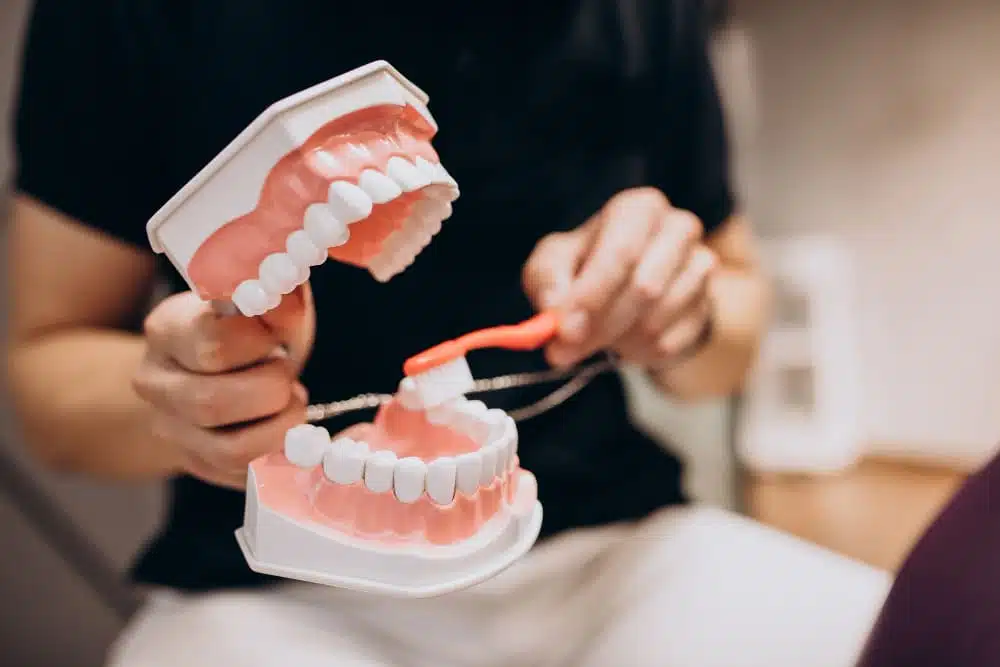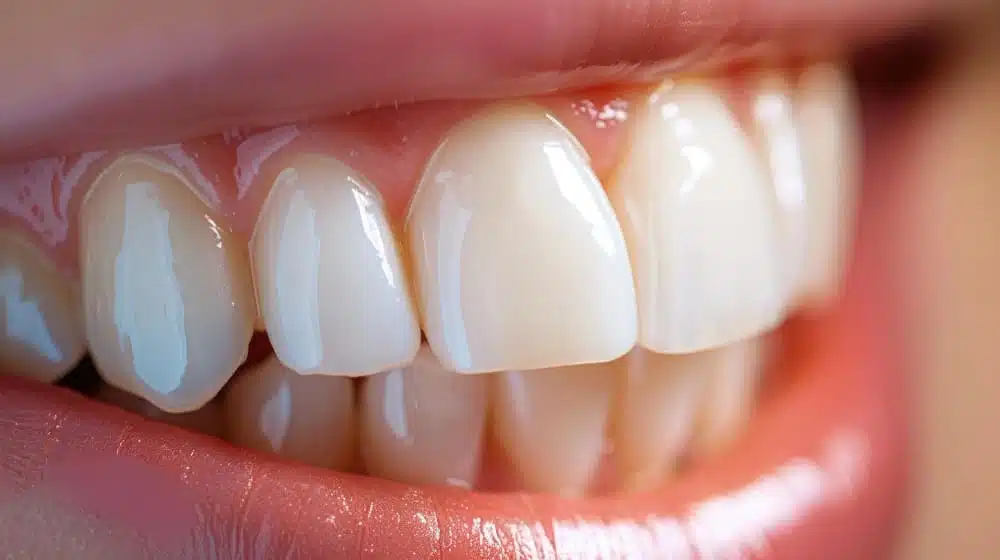A beautiful, healthy smile plays a significant role in boosting self-confidence and making a lasting impression. However, imperfections such as chipped, cracked, or discolored teeth can diminish that confidence. Thankfully, cosmetic dental procedures like composite bonding offer a simple and effective solution to enhance the appearance of your teeth.
Composite bonding, also known as dental bonding, is a minimally invasive treatment that can correct various dental issues. In this comprehensive guide, we’ll explore what composite bonding is, how it works, its benefits, the procedure, and why it might be the right choice for you.
What Is Composite Bonding?
Composite bonding is a cosmetic dental treatment that involves the application of a tooth-colored resin material to repair and enhance the appearance of teeth. It is often used to address issues like chipped or cracked teeth, gaps between teeth, discoloration, or misshapen teeth. The material used in bonding closely resembles the natural color and texture of tooth enamel, providing a seamless and natural-looking result.
Unlike other cosmetic treatments such as veneers or crowns, composite bonding is a non-invasive procedure that doesn’t require significant alteration of the natural tooth structure. The process is quick, affordable, and effective, making it a popular choice for those looking to improve their smile without extensive dental work.
Benefits of Composite Bonding
Composite bonding offers several advantages that make it an attractive option for cosmetic dental improvement:
1. Minimally Invasive
One of the key benefits of composite bonding is that it is a minimally invasive procedure. Unlike veneers or crowns, which may require the removal of some tooth enamel, composite bonding typically involves little to no alteration of your natural teeth. This preserves the tooth’s structure while still achieving noticeable cosmetic improvements.
2. Quick and Convenient
Composite bonding can often be completed in a single visit to the dentist, making it a convenient option for individuals with busy schedules. In most cases, the procedure takes only 30 minutes to an hour per tooth, allowing you to walk out of the clinic with a transformed smile in just one appointment.
3. Natural-Looking Results
The composite resin used in dental bonding is carefully matched to the color of your surrounding teeth, ensuring a natural-looking result. Once the resin is shaped and polished, it blends seamlessly with your teeth, giving you a beautiful, flawless smile.
4. Affordable
Compared to other cosmetic dental treatments like veneers or crowns, composite bonding is a more affordable option. This makes it an accessible choice for individuals looking to enhance their smile without breaking the bank.
5. Reversible
Since composite bonding is a non-invasive treatment, it is reversible. If, in the future, you decide to explore other cosmetic options, such as veneers, the bonding material can be removed without causing damage to your natural teeth.
Common Uses of Composite Bonding
Composite bonding is a versatile treatment that can address various dental concerns. Some of the most common uses include:

1. Repairing Chipped or Cracked Teeth
Accidents, sports injuries, or even biting down on something hard can result in chipped or cracked teeth. Composite bonding offers a simple solution to restore the appearance and function of these damaged teeth.
2. Closing Gaps Between Teeth
Small gaps between teeth, also known as diastemas, can sometimes be a source of insecurity. Composite bonding can fill these gaps, giving your smile a more uniform and cohesive appearance.
3. Improving Tooth Discoloration
Discoloured teeth that do not respond to whitening treatments can be covered with composite bonding. The tooth-coloured resin is applied to the surface of the tooth, concealing any stains and giving your teeth a brighter, more even colour.
4. Reshaping Teeth
If you have teeth that are uneven or misshapen, composite bonding can be used to reshape them. The resin is moulded to improve the size and shape of the tooth, creating a more symmetrical and aesthetically pleasing smile.
5. Protecting Exposed Roots
Receding gums can expose the roots of your teeth, leading to increased sensitivity and discomfort. Composite bonding can cover these exposed roots, reducing sensitivity and protecting the tooth from further damage.
The Composite Bonding Procedure
The process of composite bonding is straightforward and typically involves just a few simple steps. Here’s what you can expect during the procedure:

1. Consultation and Treatment Planning
Before the procedure begins, your dentist will assess your teeth and discuss your cosmetic goals. They will also determine whether composite bonding is the right treatment for your needs or if other options would be more suitable.
2. Preparation
In most cases, little to no preparation of the tooth is needed for composite bonding. Unlike veneers, which require the removal of some tooth enamel, bonding is a non-invasive procedure that typically does not require anaesthesia unless the bonding is being used to fill a cavity.
3. Application of Composite Resin
Once the tooth is prepared, the dentist will apply the tooth-coloured composite resin to the surface of the tooth. The resin is soft and moldable, allowing the dentist to carefully shape and sculpt it to achieve the desired look.
4. Curing the Resin
After the resin has been shaped to perfection, it is hardened using a special curing light. This light activates the material, bonding it securely to the tooth and ensuring durability.
5. Polishing
Once the resin is hardened, the dentist will polish the tooth to ensure a smooth, natural-looking finish. This step also helps the bonded tooth blend seamlessly with your surrounding teeth.
How to Care for Bonded Teeth
Composite bonding is a long-lasting cosmetic solution, but proper care is essential to maintain its appearance and durability. Here are some tips to help you care for your bonded teeth:
1. Practice Good Oral Hygiene
Maintaining good oral hygiene is crucial for the longevity of your composite bonding. Be sure to brush your teeth twice a day and floss daily to prevent plaque buildup and protect the bonded areas.
2. Avoid Staining Foods and Beverages
Composite resin can be prone to staining over time, especially if you frequently consume dark-coloured foods and beverages like coffee, tea, red wine, and berries. If possible, try to limit your intake of these items or rinse your mouth with water after consuming them to prevent stains.
3. Avoid Hard or Sticky Foods
While composite bonding is durable, it is not as strong as natural teeth. Avoid biting down on hard objects like ice, candy, or pens, as this can chip or break the bonding material. Similarly, avoid sticky foods that could pull at the bonding and potentially damage it.
4. Visit Your Dentist Regularly
Routine dental checkups are essential for maintaining the health of your teeth and any cosmetic work, including bonding. During your checkups, your dentist will assess the condition of your bonded teeth and make any necessary adjustments or repairs.
How Long Does Composite Bonding Last?
The longevity of composite bonding depends on several factors, including the location of the bonding, your oral hygiene habits, and how well you care for your teeth. On average, composite bonding can last anywhere from 5 to 10 years before needing repair or replacement.
To extend the lifespan of your bonding, it’s essential to follow your dentist’s care instructions and avoid habits that could damage the bonding material, such as biting your nails or chewing on hard objects.
Composite Bonding vs. Veneers: Which Is Right for You?

While both composite bonding and veneers are cosmetic treatments used to improve the appearance of teeth, there are some key differences between the two:
- Composite Bonding: This is a quick, non-invasive procedure that can be completed in a single visit. It is ideal for individuals who have minor cosmetic imperfections and want a cost-effective solution.
- Veneers: Veneers are thin shells of porcelain that are custom-made to cover the front surface of teeth. Veneers require more preparation of the tooth and are typically more expensive than bonding. However, veneers are also more durable and stain-resistant, making them a better option for individuals looking for a long-term solution.
Is Composite Bonding Right for You?
Composite bonding is an excellent option for individuals who want to improve their smile without undergoing invasive dental procedures. Whether you have chipped teeth, gaps, discoloration, or minor alignment issues, bonding can provide a fast, affordable, and natural-looking solution.
However, composite bonding may not be suitable for everyone. If you have severe dental issues, such as significant tooth decay, misalignment, or gum disease, other treatments such as veneers, crowns, or orthodontics may be more appropriate.
Composite bonding is a versatile and effective cosmetic dental procedure that can transform your smile in just one visit. By addressing issues like chipped teeth, discoloration, and gaps, bonding provides a seamless, natural-looking solution that boosts your confidence and enhances your overall appearance.
At Mint Dentals Care in Dubai, our experienced team of dental professionals specialises in providing top-quality composite bonding services. If you’re ready to achieve a beautiful, radiant smile, contact us today to schedule your consultation and discover how composite bonding can benefit you!















